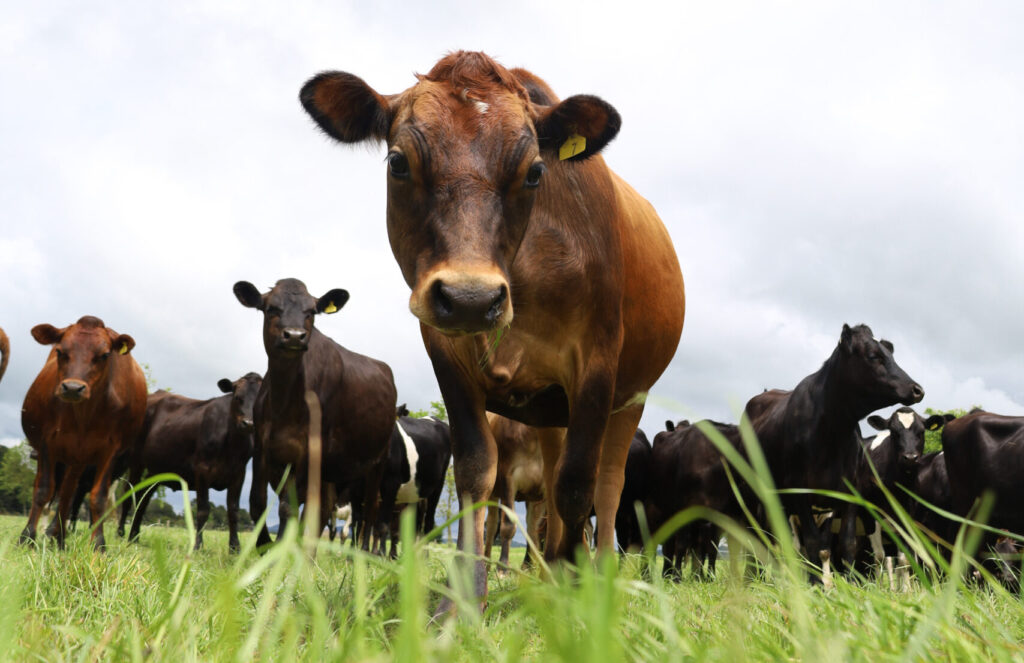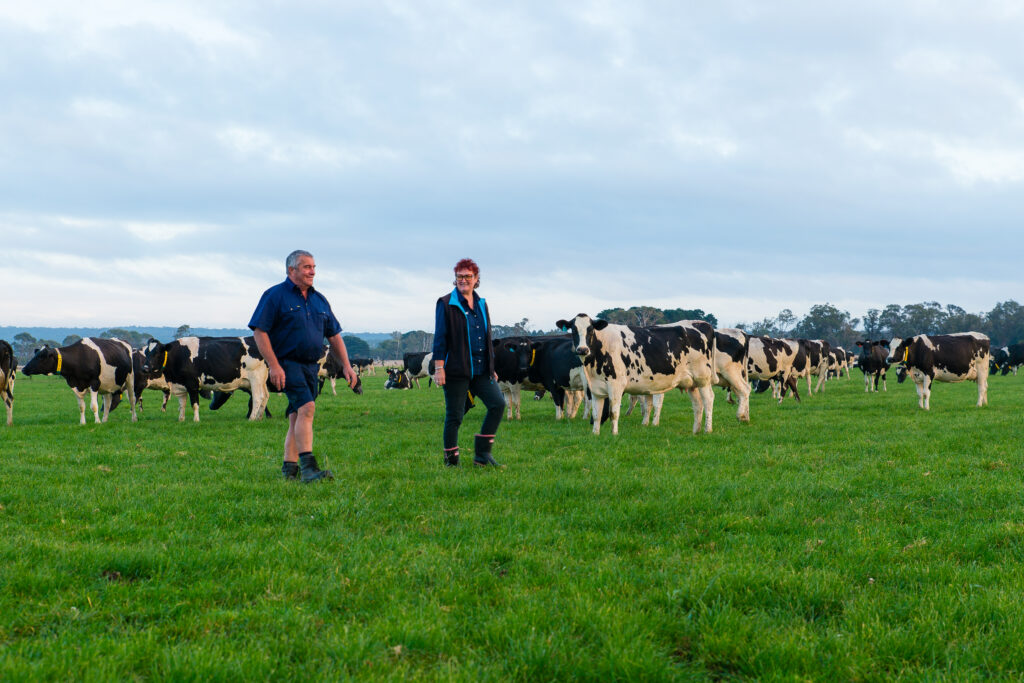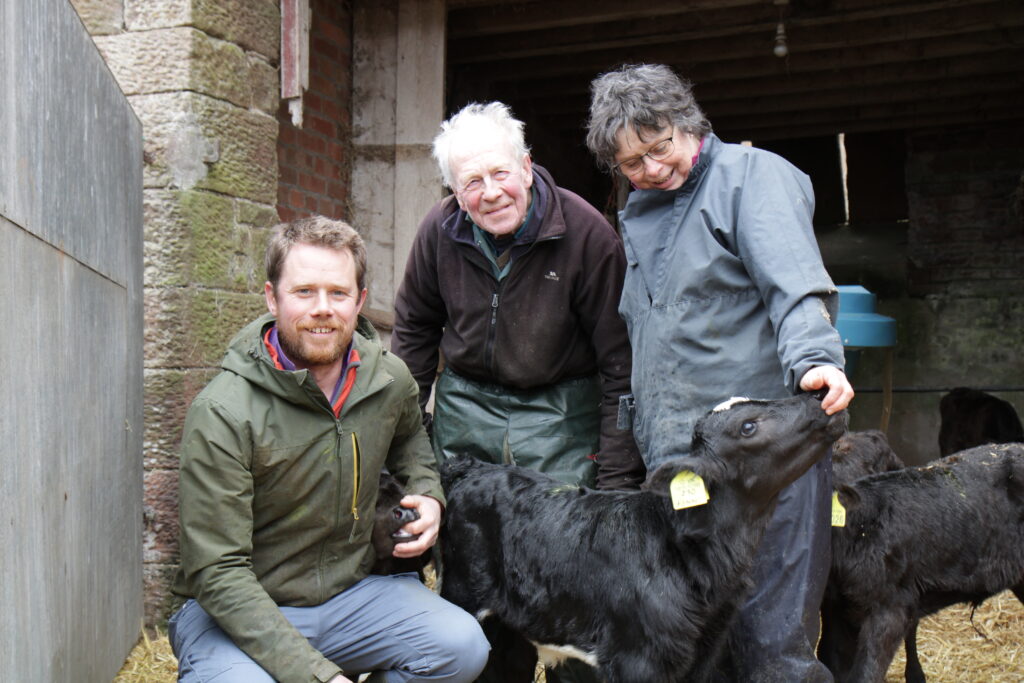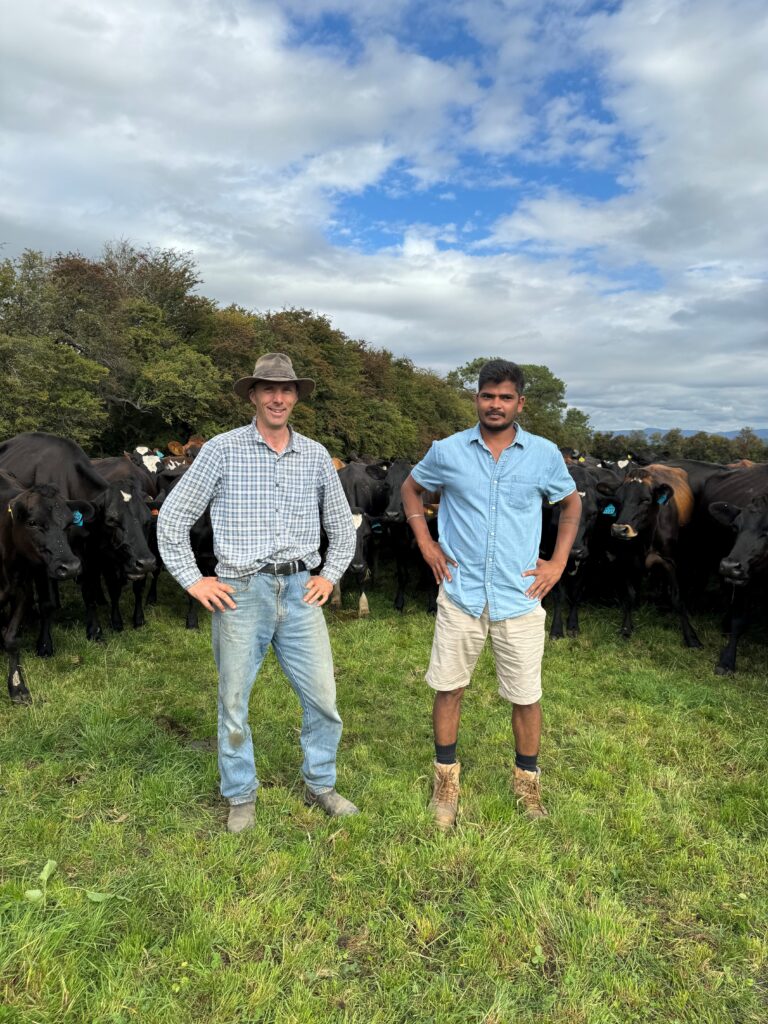A programme of consistent genetic gain, recording accuracy, and calf quality is the key to success on the Rogers’ Taupiri Farm in Waikato, New Zealand.
The Rogers’ Taupiri farm is among the top-echelon in recent genetic gain figures. The speed of improvement across the farm’s replacement calves has more than doubled in the past decade.
Although many factors, including genetic gain, contribute to per-cow milksolid production from season-to-season, it’s perhaps no coincidence that per-cow milksolid production in the Rogers’ herd has been on a similar upward trend (to that of genetic gain in the herd’s replacement stock).
In the past decade Chris and Dianna Rogers’ breeding plan has seen an average genomic breeding worth (gBW) gain of 24 points per year across their replacement calves, significantly higher than the widely heralded NZ industry average gain of 10BW per year.
Even better, during the most recent four-year period, the average year-on-year gain in each cohort of the Rogers’ replacement stock has hit nearly 37gBW per year.
During the past few years, the Rogers have generally raised between 135 and 140 replacement calves, selling any that are surplus to requirements.
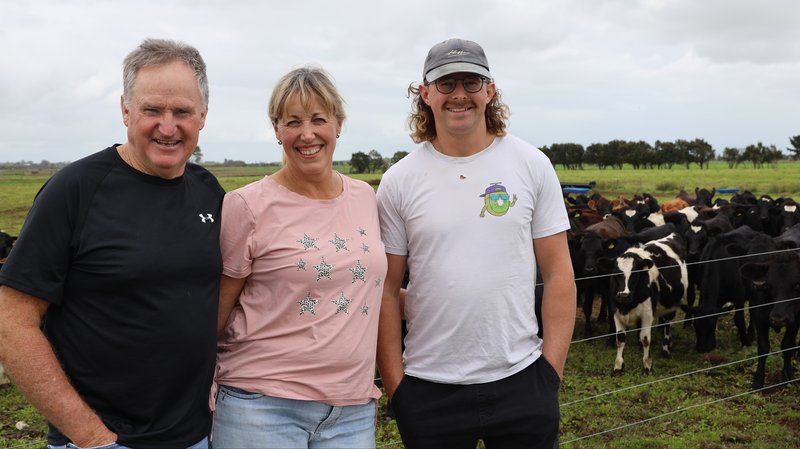
How have they done it?
“We’ve simply followed the principle to breed on gBW, and cull on PW (production worth),” Chris says. “It seems to be working well.”
But he and Dianna, who manage the farm along with their son Bennet, admit there’s a little more to it.
“About 10 years back we had a meeting down at the Taupiri rugby club, and we had Malcolm Ellis (in a former role as part of the LIC sire selection team) present to us,” Chris says. “We were actually doing a lot of what he was saying, but it resonated.”
The recommendations served as reassurance the herd was on the right track and gave the Rogers’ the confidence they needed to ramp-up their strategy of continuing on their genetic gain path by concentrating on the quality of their replacements.
That centred on the mantra of farmers mating their best cows to the best-available sires and retaining the best replacement stock to bring through to the milking platform: “It sounds simple but it’s not really as easy as you might think,” Chris says.
For a start, you’ve got to have accurate records, the family says.
“So, you need to know who is performing, and I can only confidently get that from herd testing (milk recording),” Chris says. “If my herd testing is accurate, I know exactly who to breed from, and I know exactly which ones to cull.”
During calving and post-calving, the Rogers also need to know which calf belongs to which cow, and that was only known, for certain, through parentage testing.
Until last year, the Rogers used sire and dam information (parent average) as their best indication in determining which replacement heifers to bring through to the milking platform, as opposed to which excess replacements to sell.
The next step, however, has been the Rogers’ adoption of LIC NZ’s Genomic Evaluation Report, and the Rogers are interested to see whether this will add further momentum in their drive for faster genetic gain in the herd.
The service provides more accurate estimations of breeding values across all traits, based on the young animal’s own DNA information. This enables for improved selection of young stock before they receive information of their own, such as herd test data.
“I’m putting a lot of faith in that [genomic service],” Chris says.
Dianna says the farm also undertakes matings on the herd’s top yearlings.
This strategy works on the principle that faster genetic gain can be achieved by cutting down on the generation interval.
“That also took us to another level,” Dianna says.

Yearlings are mated to a mix of fresh and frozen sexed semen, with the yearling matings starting ahead of the herd’s planned start of mating.
“If you’ve got a good cow, I believe you’ve got to do your utmost to get a heifer out of her,” Chris says. “I’ll extend my mating just to do that, even if she’s going to be a late-calver.”
The top-60% of the herd goes to Premier Sires Forward Pack (top performers from LIC’s Daughter Proven teams, plus a selection of elite young bulls), with 2-3 straws of sexed semen per day going to the best cows for a total of three weeks. Some nominated bull semen is also utilised for top cows. “This usually gives us surplus heifers that we rear, then we pick which ones to be retained,” Dianna says.
The balance of the herd goes to SGL Hereford.
“The genomic bulls are a lot more reliable today,” Chris adds, and, mixed-in with Daughter Proven bulls, the necessary team reliability is provided for within the Forward Pack offering.
Chris says he perseveres with his artificial breeding programme, at times extending it through until Christmas for the spring calvers, and from 1 June to mid-July for the autumn calvers. “It’s a long-time to be doing AI, but I don’t mind it.”
The couple’s Taupiri farm milks about 530 cows and is a once-a-day, split calving operation. The crossbred cows are milked through a 48-aside herringbone dairy. Chris and Dianna say they want to manage stock numbers down to about 500 in the near future.
The Rogers make careful in-shed assessments of heats, but regular in-paddock observations of yearling and cow behaviour (for signs of heat) are also recorded during mating.
The family is grateful for the advice they’ve received from their current LIC Agri Manager Tamara Finlay, and their former LIC representative Ross Wrenn, together with “outstanding” LIC AB (AI) technicians that have worked on the farm, Libby Soper and Bill Leanard.
